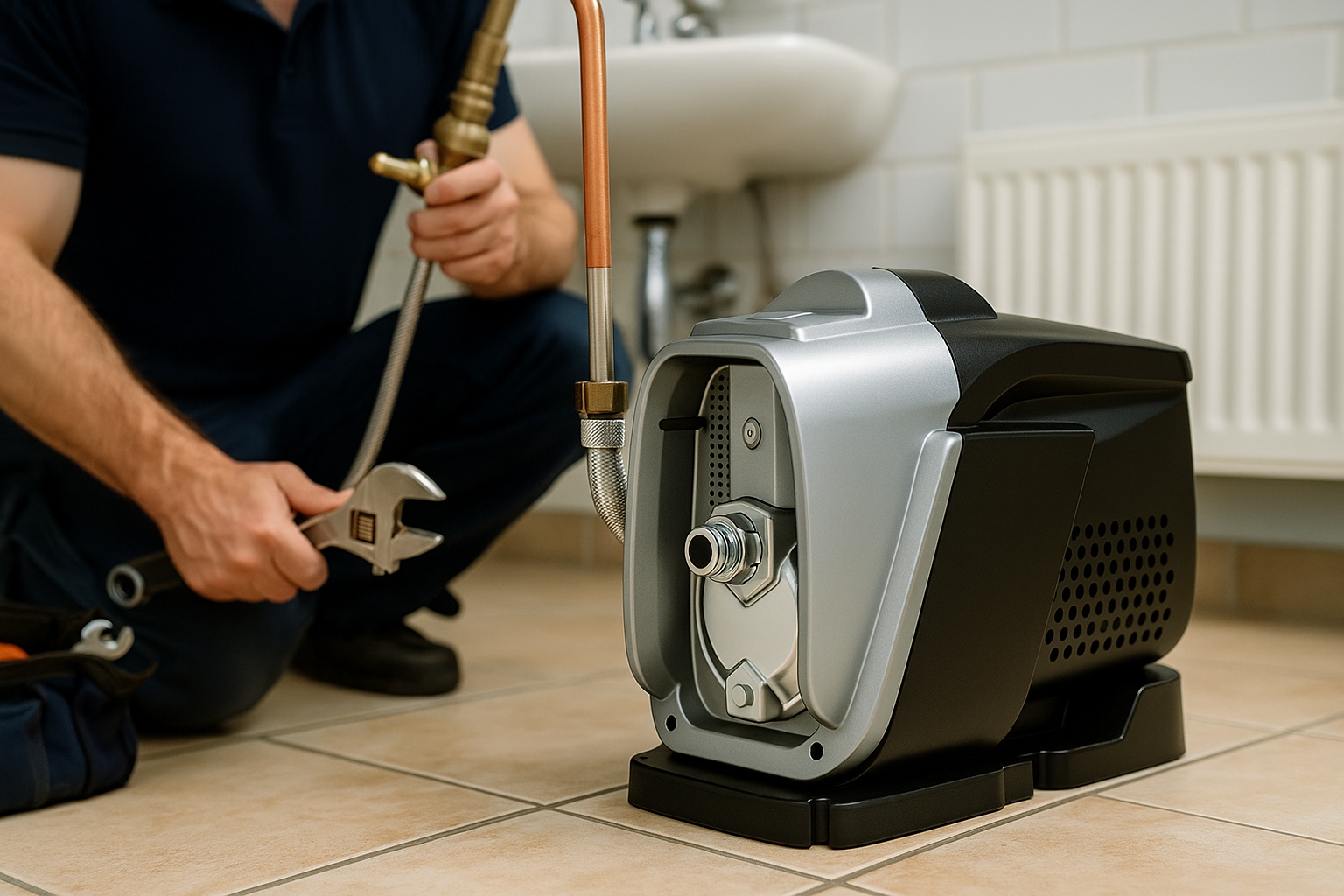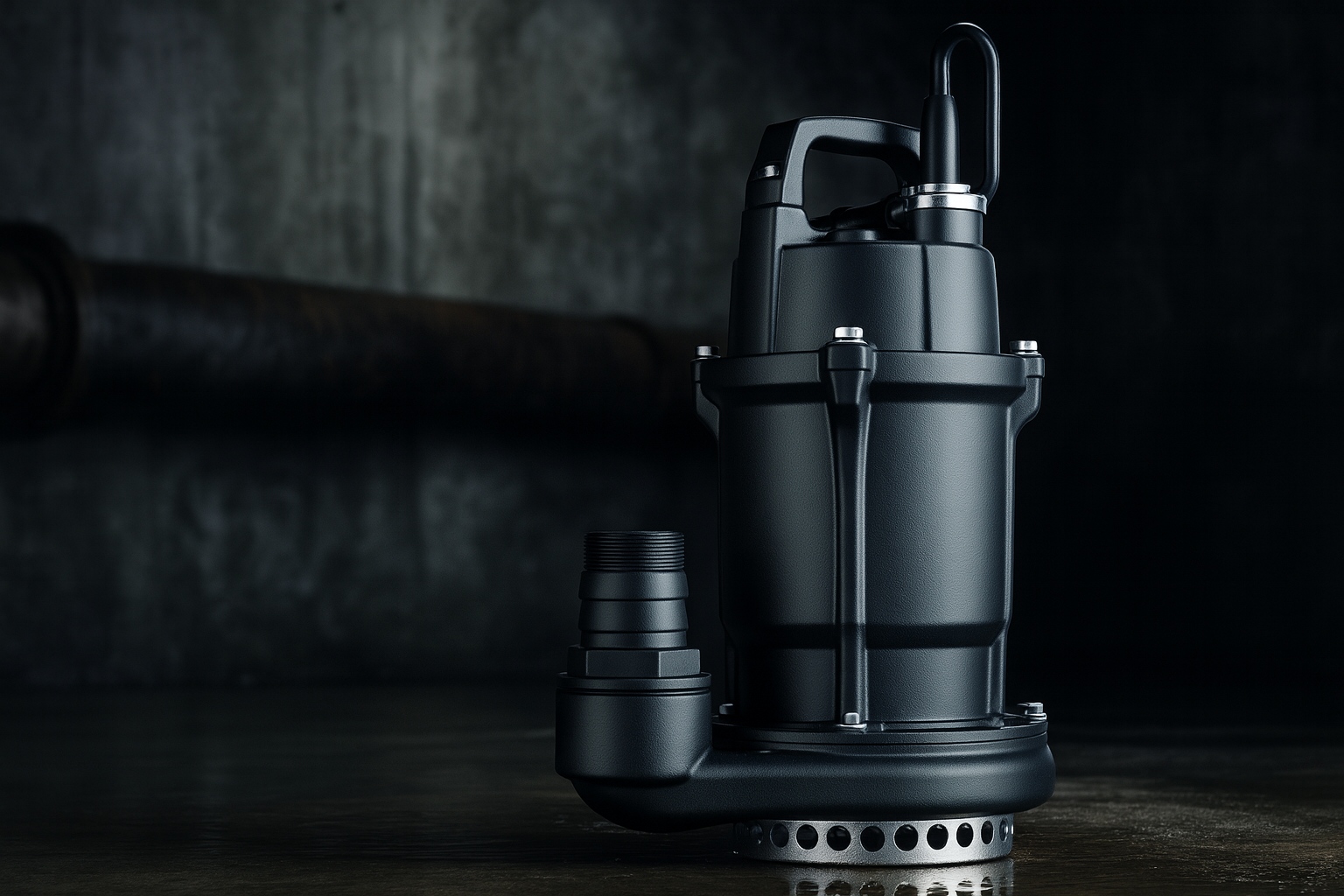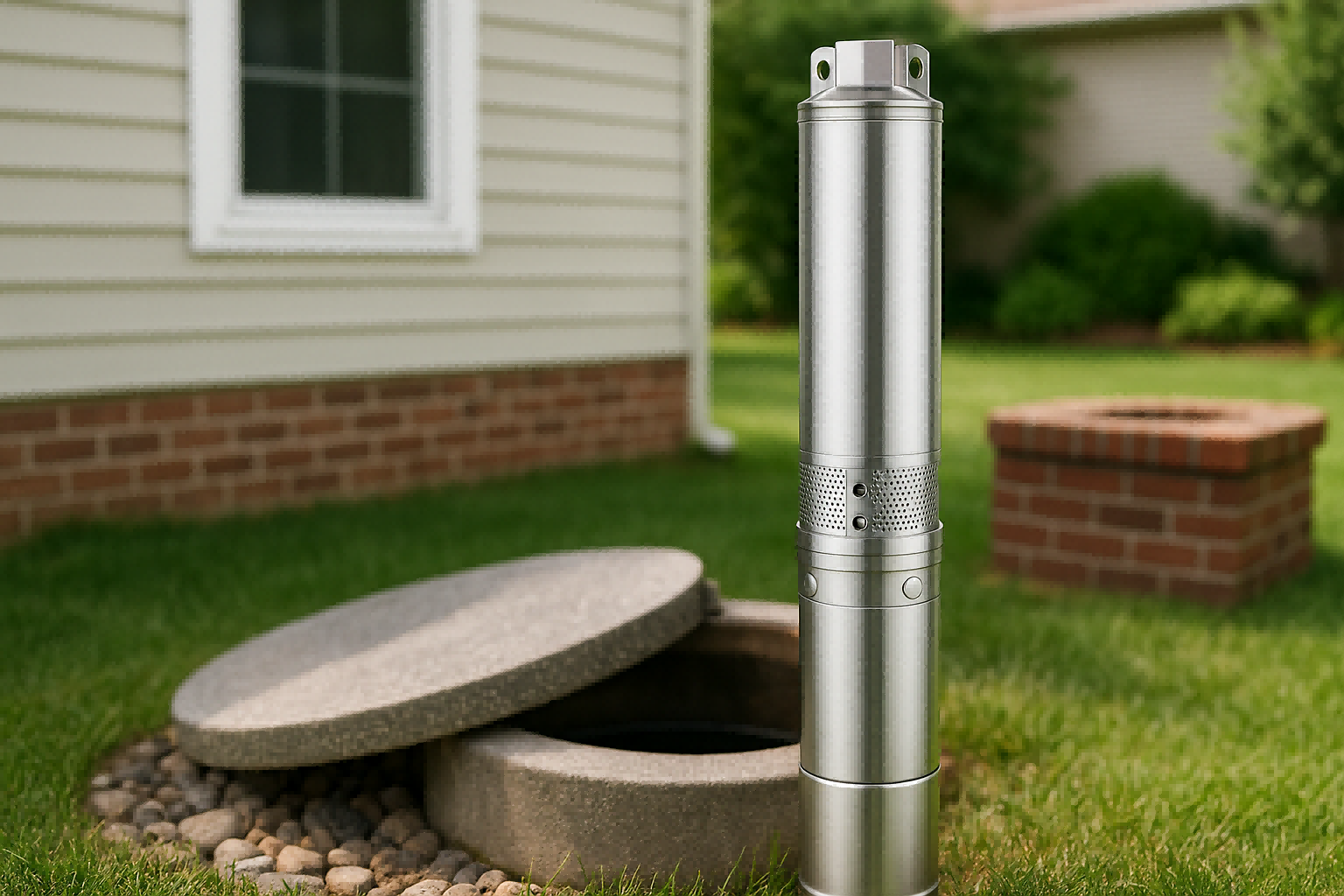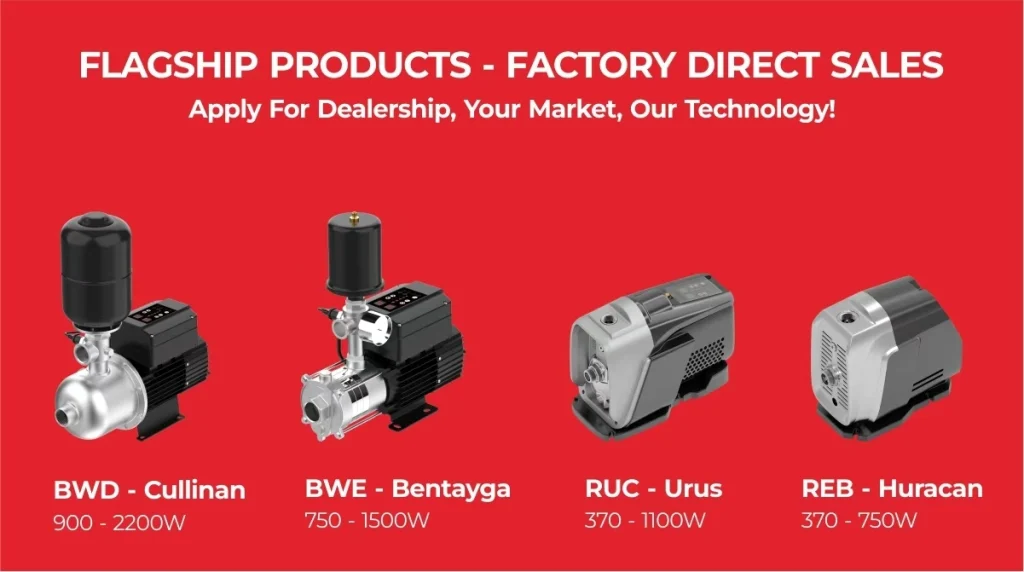Struggling with weak water flow?
Inconsistent pressure can disrupt homes and industries.
The right pump offers a powerful, stable solution.
A centrifugal pump is a mechanical device using an impeller to move fluids. A booster pump describes the application of a pump to increase pressure within an existing system. Often, a booster pump is a type of centrifugal pump specifically configured for this pressure-boosting task.

Understanding this distinction is not just about terminology.
It is crucial for selecting the correct equipment for your needs.
Making the wrong choice can lead to inefficiency, unnecessary costs, or a system that fails to solve your pressure problems.
Let's dive deeper into what defines each of these pump types and how their roles differ.
This will help you make an informed decision for any application, from a single home to a large industrial facility.
What Is a Booster Pump?
Do you experience a frustrating drop in water pressure when multiple taps are open?
This common problem has a dedicated solution.
A booster pump is a pump designed specifically to increase, or "boost," the pressure of water or another fluid that is already flowing within a system.
It does not create the initial flow but enhances it to meet demand.
A booster pump is fundamentally a problem-solver for inadequate pressure.
It acts as an in-line amplifier for your water system.
Think of it not as the source of the water, but as the muscle that pushes it harder and faster to where it needs to go.
This is essential in many modern environments where the standard municipal supply is insufficient.
The Core Function: Augmenting Pressure
The primary job of a booster pump is to take an existing, low-pressure water supply and increase its pressure.
It is installed within a plumbing line.
The pump draws in the low-pressure water.
It then uses its internal mechanism, typically an impeller, to add energy to the water.
This energy is released as higher pressure at the outlet.
The result is a strong and consistent flow at all faucets, sprinklers, or industrial nozzles connected to the system.
Common Scenarios Requiring a Booster Pump
Many situations call for the installation of a booster pump.
Recognizing these scenarios is the first step toward finding a solution.
| Scenario | The Problem | The Booster Pump Solution |
|---|---|---|
| Multi-Story Buildings | Water pressure from the city main drops significantly on higher floors, leading to weak showers and slow-filling toilets. | A booster pump maintains a consistent, high pressure to all floors, ensuring adequate flow regardless of height. |
| Large Homes | Using multiple bathrooms or appliances at once causes a noticeable drop in pressure for everyone. | The pump activates on demand to keep the system pressure stable, even during peak usage times. |
| Irrigation Systems | Sprinklers or drip lines do not have enough pressure to cover the intended area effectively, leading to dry spots. | A booster pump provides the necessary pressure to ensure even and wide water distribution for lawns and crops. |
| Industrial Processes | Certain manufacturing or cleaning processes require high-pressure water spray that the standard supply cannot provide. | The pump delivers the specific high pressure required for applications like high-pressure cleaning or reverse osmosis. |
Key Application Areas
Booster pumps are versatile and critical in many sectors.
- Residential Water Supply: Ensuring strong, steady pressure in homes and apartment buildings.
- Commercial Buildings: Maintaining water pressure in hotels, hospitals, and office towers.
- HVAC Systems: Circulating water efficiently in heating, ventilation, and air conditioning loops.
- Industrial Water Systems: Providing high-pressure water for manufacturing, cleaning, and cooling.
- Firefighting Systems: Guaranteeing that sprinkler systems and fire hoses have sufficient pressure to be effective.
- Reverse Osmosis (RO): Pushing water through fine membranes for purification.
How Does a Booster Pump Work?
Ever wonder how a simple device can dramatically increase your water pressure?
The mechanics behind it are both clever and efficient.
A booster pump works by taking in fluid and using a rapidly spinning impeller to accelerate it.
This process transforms velocity into pressure, sending the fluid out with much greater force than when it entered.
The operation of a booster pump is a perfect example of converting rotational energy into hydraulic power.
It follows the fundamental principles of centrifugal force.
The pump's motor drives a component called an impeller, which is the heart of the entire operation.
As water flows into the pump, the impeller "grabs" it and flings it outward at high speed.
This action is what creates the significant pressure increase you experience at the tap.
The Heart of the Pump: The Impeller and Volute
The key to pressure generation lies in two main components.
The impeller is a rotating disc with angled vanes.
As the motor spins the impeller at high speed, the vanes catch the incoming water and accelerate it radially outward.
This process imparts a large amount of kinetic energy (velocity) to the water.
The volute casing is the snail-shaped chamber that surrounds the impeller.
Its cross-sectional area gradually increases towards the discharge outlet.
As the high-velocity water from the impeller enters the volute, it slows down.
This deceleration converts the water's kinetic energy into potential energy, which manifests as high pressure.
The Step-by-Step Pumping Process
The journey of water through a booster pump is a continuous and rapid cycle.
- Intake: The pump is connected to the water source, and low-pressure water is drawn into the center of the pump, an area known as the impeller eye.
- Impeller Action: The motor spins the impeller at thousands of rotations per minute (RPM). The impeller's vanes catch the water and accelerate it outward using centrifugal force.
- Pressurization: As the water is forced into the widening volute casing, its speed decreases, and its pressure increases dramatically.
- Discharge: The now high-pressure water is forced out of the pump's discharge outlet and into the building's plumbing system, delivering a strong, stable flow.
The Role of Automatic Controls
Modern booster pumps are not just simple motors.
They are intelligent systems.
Many are equipped with automatic controls that make them highly efficient and convenient.
A pressure switch or pressure sensor constantly monitors the pressure in the plumbing system.
When you open a tap, the pressure drops.
The sensor detects this drop and instantly signals the pump to turn on.
When you close the tap, the pressure builds back up.
Once the preset pressure level is reached, the sensor signals the pump to turn off.
This automatic operation ensures you always have the pressure you need, but it also saves significant energy by preventing the pump from running when it is not needed.
What Are the Types of Booster Pumps?
Is your pressure problem in a deep well or a high-rise building?
The right type of booster pump is critical for success.
Booster pumps are categorized by their mechanical design, such as centrifugal or jet pumps, and by their configuration, like single-stage or multi-stage.
Each type is engineered for specific pressure needs, flow rates, and water sources.
Choosing the right type of booster pump is essential for achieving optimal performance and efficiency.
The term "booster pump" describes a function, but the actual machine performing that function can vary significantly in its design.
The most common designs are based on centrifugal technology, but other types exist for specialized tasks.
Understanding these categories will help you match the pump's capabilities to your application's demands, ensuring a reliable and cost-effective solution.
Centrifugal Booster Pumps
This is the most common category, defined by the use of an impeller to pressurize fluid.
- Single-Stage Centrifugal Pumps: These pumps have one impeller. They are ideal for applications requiring a moderate pressure increase. You will find them in many residential and light commercial settings where the existing pressure just needs a small to medium "boost."
- Multi-Stage Centrifugal Pumps: These powerful pumps feature multiple impellers arranged in a series. Water passes from one impeller to the next, and each stage adds more pressure. This design makes them perfect for applications demanding very high pressure, such as supplying water to tall buildings, large-scale irrigation, or industrial processes.
- Vertical Multi-Stage Pumps: These are functionally similar to their horizontal counterparts but are designed with a vertical orientation. Their smaller footprint makes them an excellent choice for installations where floor space is limited, such as in compact mechanical rooms.
Jet Booster Pumps
Jet pumps work by a slightly different principle.
They use a jet of water to create a vacuum and draw more water into the system.
- Shallow Well Jet Pumps: These pumps are used when the water source is less than 25 feet (about 7.6 meters) deep. They use a single pipe to both draw water up and create the jetting action, making them a simple solution for boosting pressure from wells or cisterns.
- Deep Well Jet Pumps: When the water source is deeper than 25 feet, a deep well jet pump is required. It uses two pipes: one to draw water up and another to send a portion of the pressurized water back down to the jet nozzle. This recirculation helps lift the water from greater depths.
Other Specialized Booster Pumps
Some applications require unique pump designs.
- Peripheral Booster Pumps: Also known as regenerative pumps, these have an impeller with many small vanes on its periphery. They excel in low-flow, high-pressure situations, making them suitable for small-scale industrial tasks or specialized circulation systems.
- Diaphragm Booster Pumps: These pumps use a flexible diaphragm that moves back and forth to pump fluid. They are ideal for pumping fluids that are sensitive or must not be contaminated, as the fluid never touches the pump's mechanical parts. They are often used in chemical dosing and food processing.
How to improve the efficiency of the water booster pump?
Are you concerned about the energy costs of running a pump?
Modern technology offers a powerful way to maximize efficiency.
Connecting a booster pump to a Variable Frequency Drive (VFD) is the most effective way to improve efficiency.
A VFD adjusts the motor's speed in real-time to precisely match water demand, dramatically reducing energy consumption.
Simply running a pump at full speed whenever it is on is a major source of wasted energy.
Most of the time, your system does not require the pump's maximum output.
A VFD, or Variable Speed Drive (VSD), is a smart controller that acts like a dimmer switch for the pump's motor.
Instead of a simple on/off operation, it modulates the motor's speed.
This intelligent control ensures the pump only uses the exact amount of energy needed at any given moment, which can lead to energy savings of up to 50% or more.
The Power of Variable Speed Control
A VFD works by changing the frequency of the electrical power supplied to the pump's motor.
Because a motor's speed is directly related to the frequency of its power supply, the VFD can precisely control how fast the pump runs.
Imagine you only need a small amount of water.
A traditional pump would run at 100% speed, wasting energy.
A VFD-controlled pump, however, will slow down its motor to deliver just the right amount of flow and pressure.
This leads to several key benefits:
- Significant Energy Savings: The pump consumes far less electricity because it is not always running at full capacity. This is the single biggest advantage of using a VFD.
- Constant Pressure: The VFD constantly adjusts the pump's speed to maintain a perfectly stable water pressure, regardless of how many taps are open. This eliminates annoying pressure fluctuations.
- Reduced Mechanical Stress: A VFD enables a "soft start" and "soft stop." The pump motor ramps up and down smoothly instead of jerking on and off. This reduces wear and tear on the motor, bearings, and seals, significantly extending the pump's lifespan.
- Quieter Operation: A pump running at a lower speed is a much quieter pump. This is a major benefit in residential or office environments.
Why Avoid Inrush Current?
When a standard electric motor starts, it draws a massive spike of electricity known as an "inrush current."
This surge can be 5 to 8 times the motor's normal running current.
Such a large current draw can cause problems for the electrical grid.
| Problem | Description | How VFD Solves It |
|---|---|---|
| Voltage Dips | The sudden current draw can cause a temporary voltage drop in the building's electrical system. | A VFD provides a soft start, gradually increasing the motor's speed and current draw, which eliminates the large inrush spike. |
| Damage to Electronics | These voltage fluctuations can damage other sensitive electronic devices connected to the same circuit. | By preventing voltage sags, the VFD protects all other equipment on the electrical network. |
| Mechanical Shock | The abrupt start delivers a physical jolt to the pump and pipes, a phenomenon known as water hammer. | The smooth ramp-up of speed eliminates this mechanical shock, protecting plumbing and extending the life of all components. |
By incorporating a VFD, a booster pump system transforms from a simple on/off device into a sophisticated, energy-efficient, and durable water management solution.
Conclusion
A centrifugal pump is a type of machine.
A booster pump is a specific job.
Understanding this key difference empowers you to select the perfect solution for any pressure problem.
FAQs
What is the main difference between pump and booster?
A pump moves fluid from one place to another. A booster is a type of pump application specifically designed to increase the pressure within an existing fluid system.
Can any centrifugal pump be a booster pump?
Yes, many centrifugal pumps can be used as booster pumps. However, they must be properly sized and controlled to effectively increase pressure without causing damage to the system.
Do I need a booster pump if I have a well?
You might. If your well pump delivers water to a storage tank but the pressure in your home is still low, a booster pump can be installed after the tank.
What size booster pump do I need?
Sizing depends on your required flow rate (in gallons or liters per minute) and the amount of pressure increase (in PSI or bar) you need. Consulting a professional is recommended.
Do booster pumps use a lot of electricity?
Modern booster pumps with Variable Frequency Drives (VFDs) are very energy-efficient. They adjust motor speed to match demand, saving significant electricity compared to older, fixed-speed models.
Do booster pumps turn on and off automatically?
Yes, most modern booster pumps have pressure sensors or switches. They automatically turn on when pressure drops (like when a tap is opened) and turn off when it is restored.
How do I stop my booster pump from running all the time?
If a pump runs constantly, it may indicate a leak in your plumbing system or a faulty pressure switch. A VFD-controlled pump will also naturally run less by matching demand.
Is a booster pump noisy?
Noise levels vary. However, newer models, especially those with permanent magnet motors and VFDs, are designed for ultra-quiet operation, often running at noise levels below 50 decibels.








